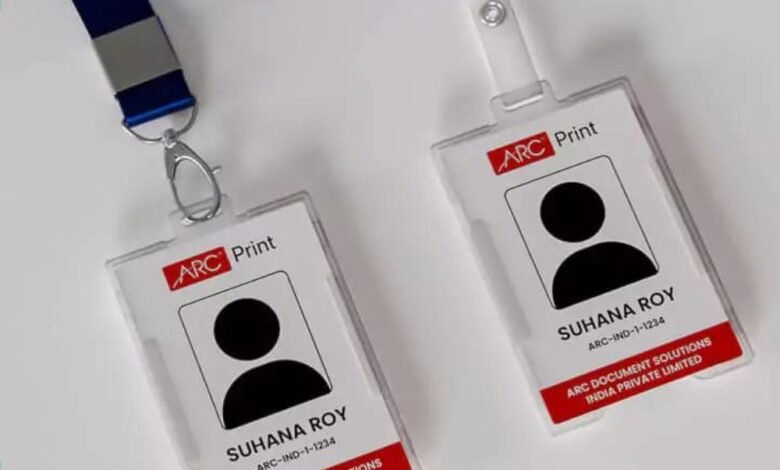
In today’s fast-paced and security-conscious world, access control systems play a crucial role in safeguarding people, assets, and information within organizations. Central to these systems are ID cards, which serve as the primary means of identification and authentication for employees, visitors, and contractors. With advancements in technology, ID card printing has evolved significantly, offering innovative solutions to streamline access control systems and enhance security measures. In this comprehensive guide, we will explore the latest innovations in ID card printing and their impact on access control systems.
Understanding the Importance of ID Card Printing and Access Control Systems
Access control systems are integral to maintaining security and ensuring the safety of personnel and assets within various environments, including offices, educational institutions, healthcare facilities, and government agencies. These systems regulate entry and exit points, monitor movement within premises, and restrict unauthorized access to sensitive areas. ID cards are a fundamental component of access control systems, providing visual identification and authentication for individuals accessing secured areas.
Components of Access Control Systems:
- ID Cards: Serve as the primary means of identification for authorized personnel.
- Card Readers: Used to scan and validate ID cards at entry points.
- Access Control Software: Manages user permissions, logs access events, and generates reports.
- Door Locks and Hardware: Control physical access to doors, gates, and barriers.
- Biometric Devices: Provide additional layers of security through fingerprint, iris, or facial recognition.
Evolution of ID Card Printing Technology
Over the years, ID card printing technology has undergone significant advancements, enabling organizations to produce high-quality, secure, and multifunctional ID cards. From traditional monochrome cards to sophisticated smart cards embedded with advanced features, ID card printing innovations continue to revolutionize access control systems.
Key Innovations in ID Card Printing:
- High-Resolution Printing: Modern ID card printers utilize high-resolution printing technologies to produce sharp images, vibrant colors, and intricate details on ID cards, enhancing visual recognition and brand representation.
- Encoding and Personalization: ID card printers now offer encoding capabilities, allowing organizations to personalize cards with data such as employee credentials, access permissions, and biometric information, enabling multifunctional use beyond visual identification.
- Security Features: Advanced security features, including holographic overlays, UV printing, microtext, and tamper-evident materials, help prevent counterfeiting, forgery, and unauthorized duplication of ID cards, enhancing overall security measures.
- Smart Card Integration: Integration with smart card technologies such as RFID, NFC, and contactless smart cards enables enhanced functionality, including access control, time and attendance tracking, cashless payments, and secure authentication.
- Mobile ID Solutions: With the rise of mobile technology, ID card printing solutions now offer mobile ID options, allowing users to store digital ID credentials on smartphones or wearable devices for convenient and secure access.
Benefits of Innovative ID Card Printing
The adoption of innovative ID card printing technologies brings several benefits to organizations seeking to enhance their access control systems and security protocols.
Advantages of Innovative ID Card Printing:
- Enhanced Security: Advanced security features and encoding capabilities help prevent unauthorized access, mitigate security risks, and safeguard sensitive information and assets.
- Improved Efficiency: Streamlined card issuance processes, encoding functionalities, and integration with access control systems result in faster, more efficient operations and reduced administrative overhead.
- Cost Savings: Long-lasting, durable ID cards and multifunctional smart card capabilities reduce the need for frequent card replacements and support cost-effective access control solutions.
- Greater Versatility: Flexible card personalization options, compatibility with various card technologies, and support for mobile ID solutions provide organizations with greater versatility in meeting their specific access control requirements.
- Enhanced User Experience: Modern ID cards offer improved visual appeal, ergonomic designs, and convenient features such as contactless technology and mobile ID access, enhancing the user experience for employees, visitors, and contractors.
Applications of Innovative ID Card Printing
Innovative ID card printing technologies find applications across diverse industries and sectors, contributing to enhanced security, efficiency, and user experience in various environments.
Common Applications Include:
- Corporate Environments: Secure access to office buildings, restricted areas, and IT infrastructure, as well as employee identification and time and attendance tracking.
- Educational Institutions: Student identification, campus access control, library services, and cashless payments for cafeteria and vending machines.
- Healthcare Facilities: Patient identification, medical records management, secure medication dispensing, and access control to sensitive areas such as laboratories and pharmacies.
- Government Agencies: Employee identification, secure access to government facilities and databases, and issuance of national ID cards and driver’s licenses.
- Events and Conferences: Attendee identification, access control to event venues, exhibitor management, and cashless transactions at concession stands and merchandise booths.
Future Trends in ID Card Printing
Looking ahead, the future of ID card is poised for continued innovation and evolution, driven by advancements in technology, changing security requirements, and emerging market trends.
Potential Future Trends Include:
- Biometric Integration: Greater integration of biometric authentication technologies such as facial recognition, iris scanning, and vein recognition into ID card solutions for enhanced security and user authentication.
- Blockchain-Based ID Solutions: Adoption of blockchain technology for secure storage and verification of digital ID credentials, providing tamper-proof authentication and decentralized identity management.
- Environmental Sustainability: Development of eco-friendly ID card printing materials and processes, as well as initiatives to reduce plastic waste and promote recycling in the production and disposal of ID cards.
- Wearable ID Devices: Expansion of wearable ID devices such as smartwatches, fitness trackers, and RFID wristbands for convenient, hands-free access control and identification.
- Artificial Intelligence (AI) Integration: Utilization of AI algorithms for predictive analytics, anomaly detection, and real-time monitoring in access control systems to enhance threat detection and security response capabilities.
Conclusion
Innovations in ID card printing technology are revolutionizing access control systems, enabling organizations to implement robust security measures, enhance operational efficiency, and improve user experience. From high-resolution printing and smart card integration to biometric authentication and mobile ID solutions, the latest advancements in lanyard printing offer versatile, secure, and future-ready solutions for diverse security applications. By embracing innovative ID card technologies and staying abreast of emerging trends, organizations can effectively address evolving security challenges and ensure the safety and integrity of their premises, assets, and personnel.

